
Water Damaged Stairs at Water Entry Point
With water coming in at the stairs (or "the cove" as it's often called), not only are the stairs themselves damaged, but the water pools at the floor and causes even more damage.
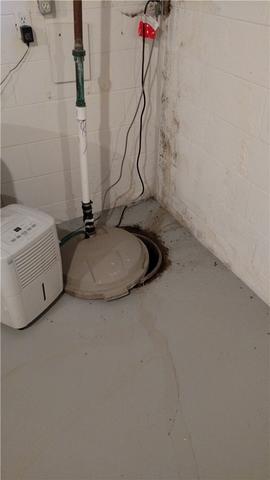
Ineffective Sump Pump
Sump pumps are a necessity in basements with water issues, but they're all but useless if there's no system in place to divert water to them.
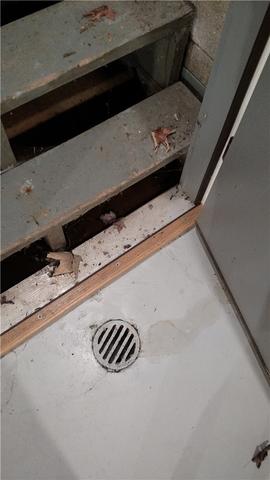
Floor Drain Can't Keep Up
This is the drain in place at the base of the basement stairs. It was probably effective against a brief trickle of water, but with the tendency of water to pool in areas like this, this basement really needs something more efficient.
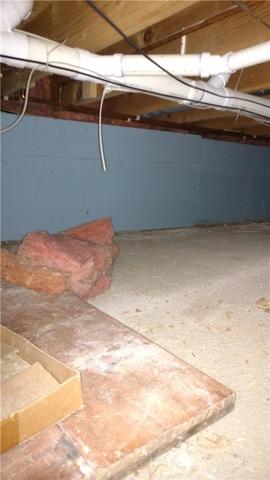
Signs of Standing Water in Basement
The staining and "dust" you can see here are both signs of water damage. The dust is actually efflorescence, which occurs when water passes through blocks and dissolves the salts in them, only to leave them behind on the surface when the water eventually evaporates. It's usually more of an aesthetic issue, but constant water influx can eventually weaken the structures it passes through.

Water Damage on Wall
Here's one of the water entry points, as evidenced by the staining left behind.

Peeling Paint Points to Water Damage
When water travels through walls, it takes out everything in its path. In this case, the movement of the water causes the paint on the walls to bubble and peel.
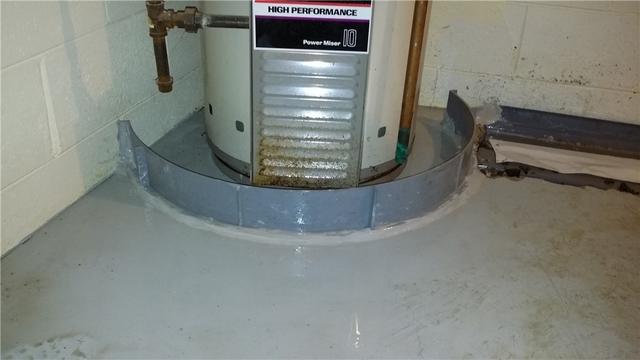
Flood Ring Helps Keep Water Contained
Groundwater isn't the only basement water that needs to be discharged - leaking water heaters can also cause problems. But our Flood Ring keeps water contained and diverts it to the WaterGuard system.
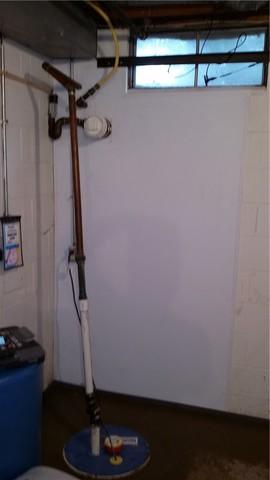
BrightWall Spruces Up Damaged Basement Walls
By installing Brightwall panels on the walls with water damage, we not only give the basement a facelift, we can help divert existing water issues because Brightwall ties into the WaterGuard system.

TrenchDrain Handles Flooding Quickly
For areas of high water influx, like the foot of the stairs shown here, a small drain isn't going to cut it. Our TrenchDrain allows for rapid draining of water.
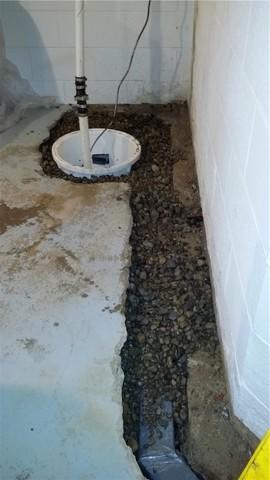
Tying WaterGuard into the SuperSump Pump
By tying the WaterGuard system right into the new sump pump, we can assure that water gets to the pump and gets discharged quickly.
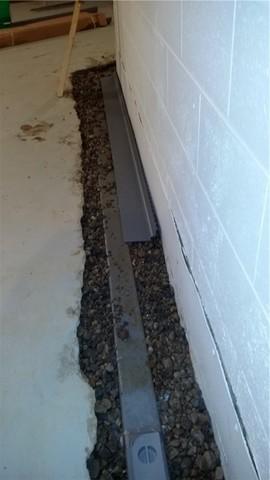
WaterGuard Installation in Progress
After the perimeter of the floor is removed, we can begin installing the WaterGuard track.
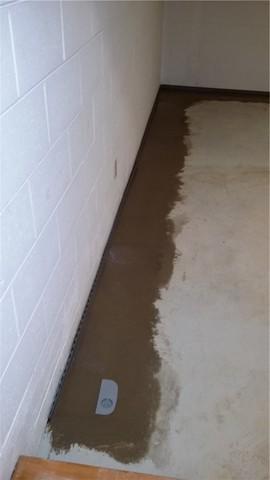
WaterGuard Installation Complete with New Floor
After pouring new concrete to restore the removed portion of the floor, the only sign anything happened is the visible inspection port, which is there in the event we need to access the system for annual maintenance check-ups.

Preparing the Basement for WaterGuard
To install a below-floor drain system, we need to get...below the floor. Which means we have to remove a portion of the concrete - but don't worry, we'll pour new concrete before we leave!









